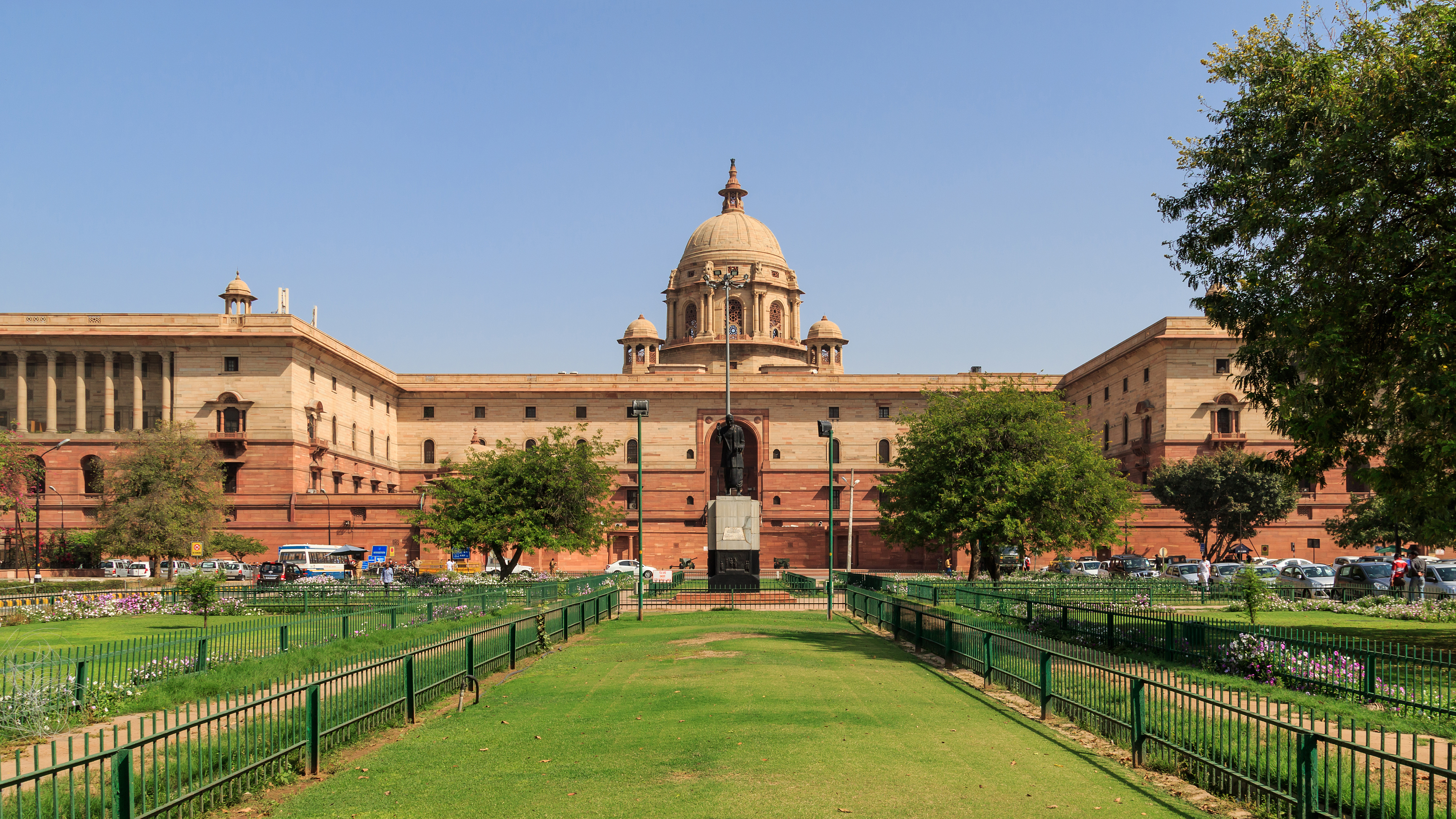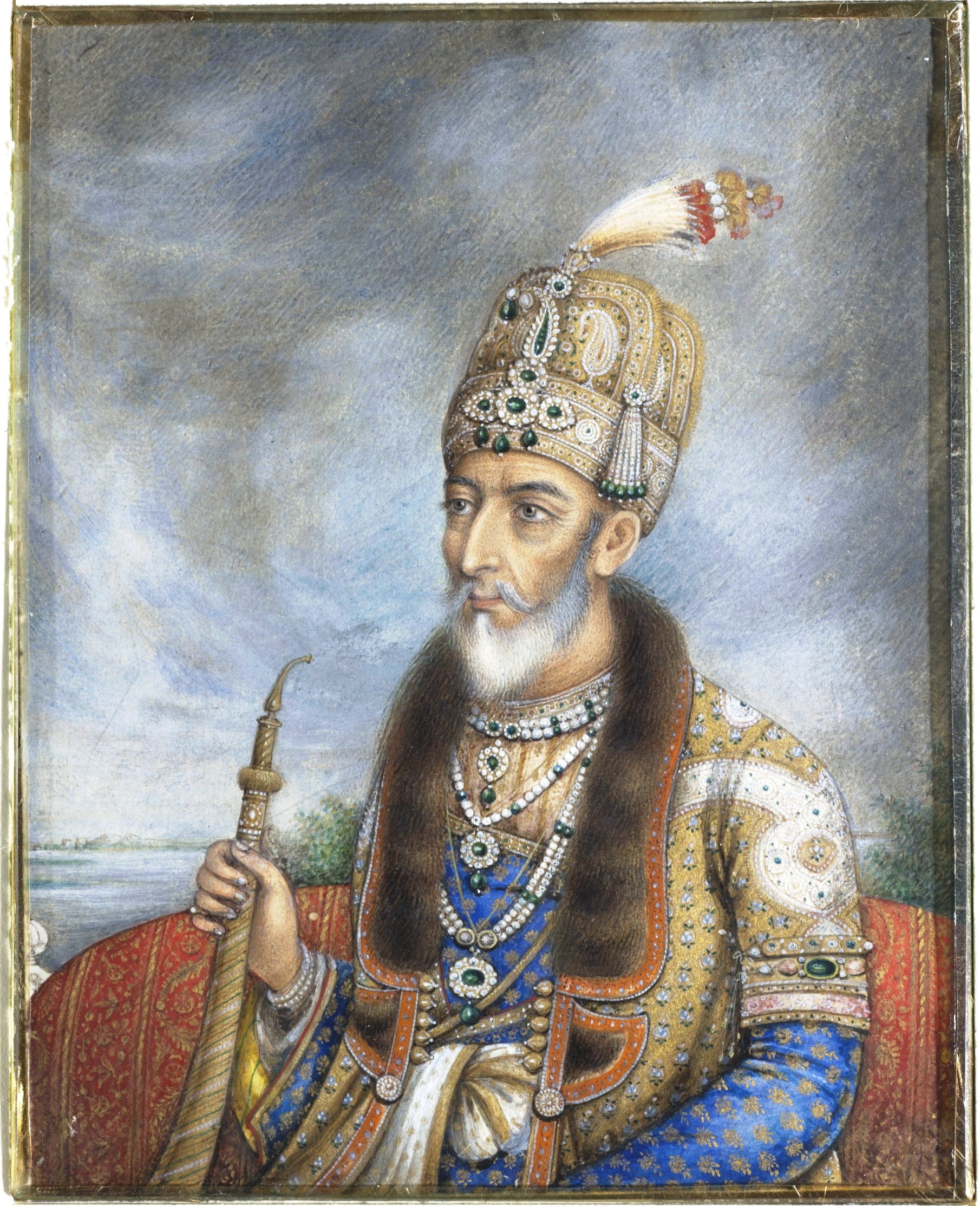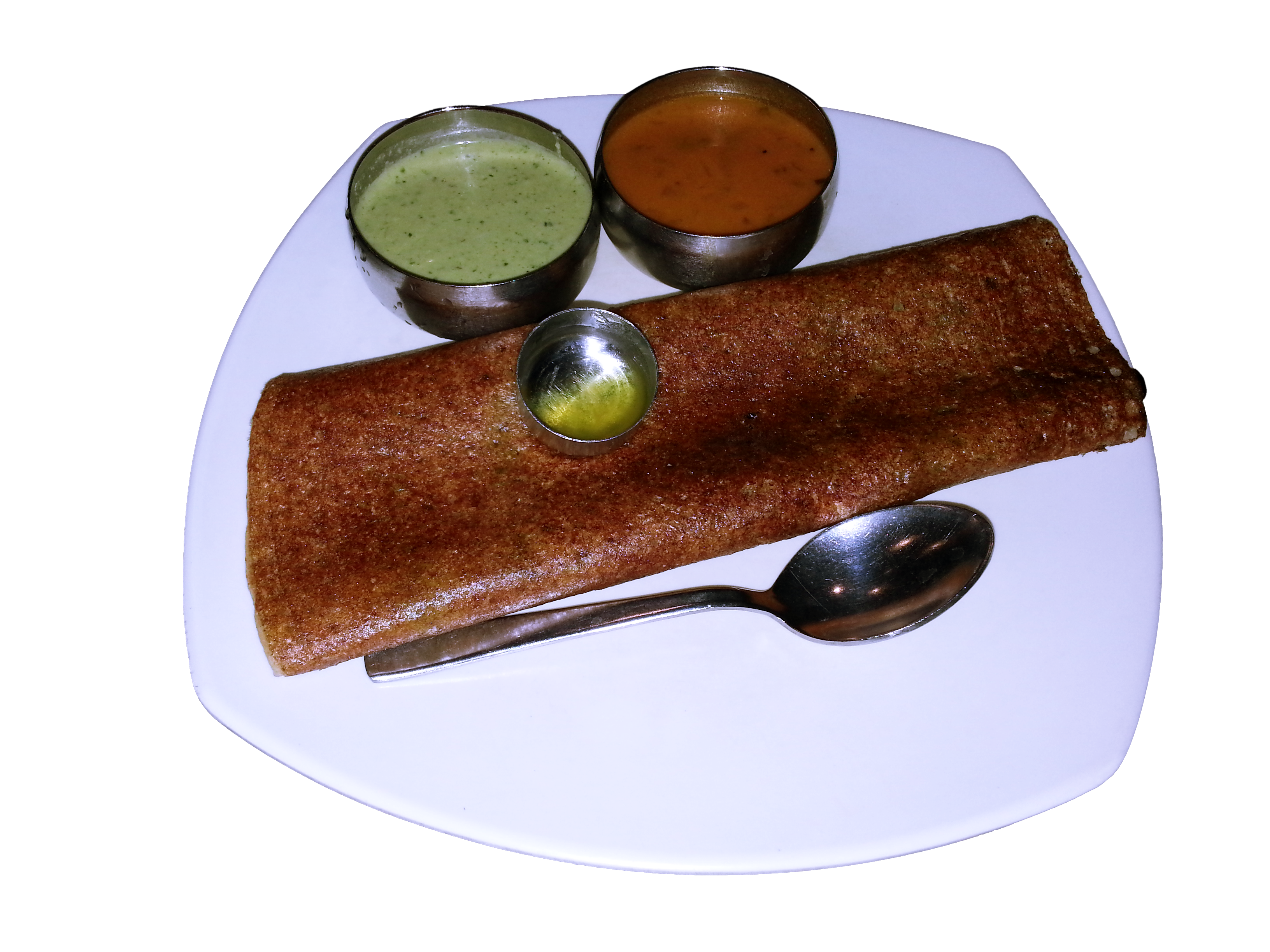|
Dosa (food)
A dosa, dosai or dosay is a thin, savoury crepe in South Indian cuisine, Indian cuisine made from a fermentation (food), fermented batter (cooking), batter of ground Vigna mungo, black gram and rice. Dosas are served hot, often with chutney and Sambar (dish), sambar. History The dosa originated in South India, but its precise geographical origins are unknown. According to food historian K. T. Achaya, references in the Sangam literature suggest that dosa was already in use in the Tamilagam, ancient Tamil country around the first century CE. However, according to historian P. Thankappan Nair, dosa originated in the town of Udupi in Karnataka. Achaya states that the earliest written mention of dosa appears in the eighth-century literature of present-day Tamil Nadu, while the earliest mention of dosaë in Tulu literature appears a century later. In popular tradition outside of Southern India, the origin of the dosa is linked to Udupi, probably because of the dish's association w ... [...More Info...] [...Related Items...] OR: [Wikipedia] [Google] [Baidu] |
Sambar (dish)
Sāmbār, or Sambhar is a lentil-based vegetable spiced curry or stew, cooked with pigeon pea and tamarind broth. It originates in South Indian cuisine and is popular in other parts of India. History The recorded history of sambar is vague. According to food historian K. T. Achaya, the earliest extant reference to sambar, as "huli", can be dated to the 17th century in present-day Karnataka. ''Kanthirava Narasaraja Vijaya'', a 1648 text by the Kannada scholar Govinda Vaidya, mentions huli (puli) (literally "sourness"), a curry similar to the modern sambar, made with vegetables and toor dal. According to a legend, sambar was first made in the Thanjavur Maratha kingdom during the reign of Shahuji I (r. 1684–1712). The legend states that during a visit by Sambhaji, a king or his royal chef substituted kokum with tamarind in the traditional ''amti'' (lentil soup), and added some vegetables to it: the resulting curry was named ''sambar'' or ''sambhar'' after Sambhaji. Sourish Bha ... [...More Info...] [...Related Items...] OR: [Wikipedia] [Google] [Baidu] |
Food Historian
Food history is an interdisciplinary field that examines the history and the cultural, economic, environmental, and sociological impacts of food and human nutrition. It is considered distinct from the more traditional field of culinary history, which focuses on the origin and recreation of specific recipes. The first journal in the field, ''Petits Propos Culinaires'', was launched in 1979 and the first conference on the subject was the 1981 Oxford Food Symposium.Raymond Sokolov, "Many Hands Stirring Many Pots", a review of ''The Cambridge World History of Food'', Natural History (magazine), ''Natural History'' 109:11:86-87 (November 2000) See also * Early impact of Mesoamerican goods in Iberian society * Food studies * List of ancient dishes * List of historical cuisines * List of food and beverage museums * Timeline of food References Further reading * Lynne Olver, Olver, Lynne. ''The Secret Ingredient''. (2024) The Food Timeline(Illustrated Edition) * * Collingham, ... [...More Info...] [...Related Items...] OR: [Wikipedia] [Google] [Baidu] |
New Delhi
New Delhi (; ) is the Capital city, capital of India and a part of the Delhi, National Capital Territory of Delhi (NCT). New Delhi is the seat of all three branches of the Government of India, hosting the Rashtrapati Bhavan, New Parliament House, New Delhi, Sansad Bhavan, and the Supreme Court of India, Supreme Court. New Delhi is a Municipal governance in India, municipality within the NCT, administered by the New Delhi Municipal Council (NDMC), which covers mostly Lutyens' Delhi and a few adjacent areas. The municipal area is part of a larger List of districts in India, administrative district, the New Delhi district. Although colloquially ''Delhi'' and ''New Delhi'' are used interchangeably to refer to the National Capital Territory of Delhi, both are distinct entities, with the municipality and the New Delhi district forming a relatively small part within the megacity of Delhi. The National Capital Region (India), National Capital Region is an even larger entity, compris ... [...More Info...] [...Related Items...] OR: [Wikipedia] [Google] [Baidu] |
North India
North India is a geographical region, loosely defined as a cultural region comprising the northern part of India (or historically, the Indian subcontinent) wherein Indo-Aryans (speaking Indo-Aryan languages) form the prominent majority population. It extends from the Himalayas, Himalayan mountain range in the north to the Indo-Gangetic plains, the Thar Desert, till Central Highlands (India), Central Highlands. It occupies nearly two-quarters of the area and population of India and includes one of the three List of Indian cities by population#List, mega cities of India: Delhi. In a more specific and administrative sense, North India can also be used to denote the northern Indo-Gangetic Plain within this broader expanse, to the Thar Desert. Several major rivers flow through the region including the Indus, the Ganges, the Yamuna and the Narmada rivers. North India includes the states of Himachal Pradesh, Uttarakhand, Punjab, India, Punjab and Haryana, Rajasthan, Uttar Pradesh, and ... [...More Info...] [...Related Items...] OR: [Wikipedia] [Google] [Baidu] |
Independence Of India
The Indian independence movement was a series of historic events in South Asia with the ultimate aim of ending British Raj, British colonial rule. It lasted until 1947, when the Indian Independence Act 1947 was passed. The first nationalistic movement took root in the newly formed Indian National Congress with prominent moderate leaders seeking the right to appear for Indian Civil Service examinations in British India, as well as more economic rights for natives. The first half of the 20th century saw a more radical approach towards self-rule. The stages of the independence struggle in the 1920s were characterised by the leadership of Mahatma Gandhi and Congress's adoption of Gandhi's policy of non-violence and Salt March, civil disobedience. Some of the leading followers of Gandhi's ideology were Jawaharlal Nehru, Vallabhbhai Patel, Abdul Ghaffar Khan, Maulana Azad, and others. Intellectuals such as Rabindranath Tagore, Subramania Bharati, and Bankim Chandra Chattopadhyay spr ... [...More Info...] [...Related Items...] OR: [Wikipedia] [Google] [Baidu] |
Someshvara III
Someshvara III (; ) was a Western Chalukya king (also known as the Kalyani Chalukyas), the son and successor of Vikramaditya VI. He ascended the throne of the Western Chalukya Kingdom in 1126 CE, or 1127 CE. Someshvara III, the third king in this dynasty named after the Hindu god Shiva made numerous land grants to cause of Shaivism and its monastic scholarship. These monasteries in the Indian peninsula became centers of the study of the Vedas and Hindu philosophies such as the Nyaya school. Someshvara III died in 1138 CE, and succeeded by his son Jagadekamalla. Someshvara was a noted historian, scholar, and poet.A Textbook of Historiography, 500 B.C. to A.D. 2000 by E. Sreedharan, p.328-329, Orient Blackswan, (2004) He authored the Sanskrit encyclopedic text ''Manasollasa'' touching upon such topics as polity, governance, astronomy, astrology, rhetoric, medicine, food, architecture, painting, poetry, dance and music – making his work a valuable modern source of socio-cul ... [...More Info...] [...Related Items...] OR: [Wikipedia] [Google] [Baidu] |
Sanskrit
Sanskrit (; stem form ; nominal singular , ,) is a classical language belonging to the Indo-Aryan languages, Indo-Aryan branch of the Indo-European languages. It arose in northwest South Asia after its predecessor languages had Trans-cultural diffusion, diffused there from the northwest in the late Bronze Age#South Asia, Bronze Age. Sanskrit is the sacred language of Hinduism, the language of classical Hindu philosophy, and of historical texts of Buddhism and Jainism. It was a lingua franca, link language in ancient and medieval South Asia, and upon transmission of Hindu and Buddhist culture to Southeast Asia, East Asia and Central Asia in the early medieval era, it became a language of religion and high culture, and of the political elites in some of these regions. As a result, Sanskrit had a lasting effect on the languages of South Asia, Southeast Asia and East Asia, especially in their formal and learned vocabularies. Sanskrit generally connotes several Indo-Aryan languages# ... [...More Info...] [...Related Items...] OR: [Wikipedia] [Google] [Baidu] |
Manasollasa
The ' also known as ''Abhilashitartha Chintamani'', is an early 12th-century Sanskrit text composed by the Kalyani Chalukya king Someshvara III, who ruled in present-day Karnataka. It is an encyclopedic work covering topics such as polity, governance, ethics, economics, astronomy, astrology, rhetoric, veterinary medicine, horticulture, perfumes, food, architecture, games, painting, poetry, dance and music. The text is a valuable source of socio-cultural information on 11th- and 12th-century India. The encyclopedic treatise is structured as five sub-books with a cumulative total of 100 chapters. It is notable for its extensive discussion of arts, particularly music and dance. It is also notable for including chapters on food recipes and festivals, many of which are a part of modern Indian culture. Another medieval era Sanskrit text with the title ''Mānasollāsa'' also exists, consisting of devotional praise hymns ('' stōtra''), and it is different from the encyclopedic treatis ... [...More Info...] [...Related Items...] OR: [Wikipedia] [Google] [Baidu] |
Udupi Cuisine
Udupi cuisine is a cuisine of South India. It forms an important part of Kannada- Tuluva cuisine and takes its name from Udupi, a city on the southwest coast of India in the Karavali region of the state of Karnataka. Most of Udupi cuisine is strictly vegetarian. However, other elements of Udupi cuisine are non-vegetarian and common to Mangalorean cuisine. Udupi cuisine has its origin in the Udupi Sri Krishna Matha founded by Madhvacharya. The cuisine was developed by Madhva Brahmins to offer different kinds of food to Krishna at the Udupi Krishna Temple. Hence, Udupi cuisine is also synonymously known as Madhva cuisine. Udupi cuisine comprises dishes made primarily from grains, beans, vegetables, and fruits. The variety and range of dishes is wide, and a hallmark of the cuisine involves the use of locally available ingredients. The famous dosa (thick crisp pancakes, plain or masala when stuffed with potatoes) is said to have originated from this cuisine. Following the t ... [...More Info...] [...Related Items...] OR: [Wikipedia] [Google] [Baidu] |
Tulu Literature
The Tulu language (,Tigalari script: , Kannada script: , Malayalam script: ; ) is a Dravidian language whose speakers are concentrated in Dakshina Kannada and in the southern part of Udupi of Karnataka in south-western India and also in the northern parts of the Kasaragod district of Kerala. The native speakers of Tulu are referred to as Tuluva or Tulu people and the geographical area is unofficially called Tulu Nadu. The Indian census report of 2011 reported a total of 1,846,427 native Tulu speakers in India. The 2001 census had reported a total of 1,722,768 native speakers. There is some difficulty in counting Tulu speakers who have migrated from their native region as they are often counted as Kannada speakers in Indian census reports. Separated early from Proto-South Dravidian, Tulu has several features not found in Tamil–Kannada. For example, it has the pluperfect and the future perfect, like French or Spanish, but formed without an auxiliary verb. Tulu is ... [...More Info...] [...Related Items...] OR: [Wikipedia] [Google] [Baidu] |
Tamil Nadu
Tamil Nadu (; , TN) is the southernmost States and union territories of India, state of India. The List of states and union territories of India by area, tenth largest Indian state by area and the List of states and union territories of India by population, sixth largest by population, Tamil Nadu is the home of the Tamil people, who speak the Tamil language—the state's official language and one of the longest surviving Classical languages of India, classical languages of the world. The capital and largest city is Chennai. Located on the south-eastern coast of the Indian peninsula, Tamil Nadu is straddled by the Western Ghats and Deccan Plateau in the west, the Eastern Ghats in the north, the Eastern Coastal Plains lining the Bay of Bengal in the east, the Gulf of Mannar and the Palk Strait to the south-east, the Laccadive Sea at the southern Cape (geography), cape of the peninsula, with the river Kaveri bisecting the state. Politically, Tamil Nadu is bound by the Indian sta ... [...More Info...] [...Related Items...] OR: [Wikipedia] [Google] [Baidu] |
Karnataka
Karnataka ( ) is a States and union territories of India, state in the southwestern region of India. It was Unification of Karnataka, formed as Mysore State on 1 November 1956, with the passage of the States Reorganisation Act, 1956, States Reorganisation Act, and renamed ''Karnataka'' in 1973. The state is bordered by the Lakshadweep Sea to the west, Goa to the northwest, Maharashtra to the north, Telangana to the northeast, Andhra Pradesh to the east, Tamil Nadu to the southeast, and Kerala to the southwest. With 61,130,704 inhabitants at the 2011 census, Karnataka is the List of states and union territories of India by population, eighth-largest state by population, comprising 31 List of districts in India, districts. With 15,257,000 residents, the state capital Bengaluru is the largest city of Karnataka. The economy of Karnataka is among the most productive in the country with a gross state domestic product (GSDP) of and a per capita GSDP of for the financial year 2023– ... [...More Info...] [...Related Items...] OR: [Wikipedia] [Google] [Baidu] |








